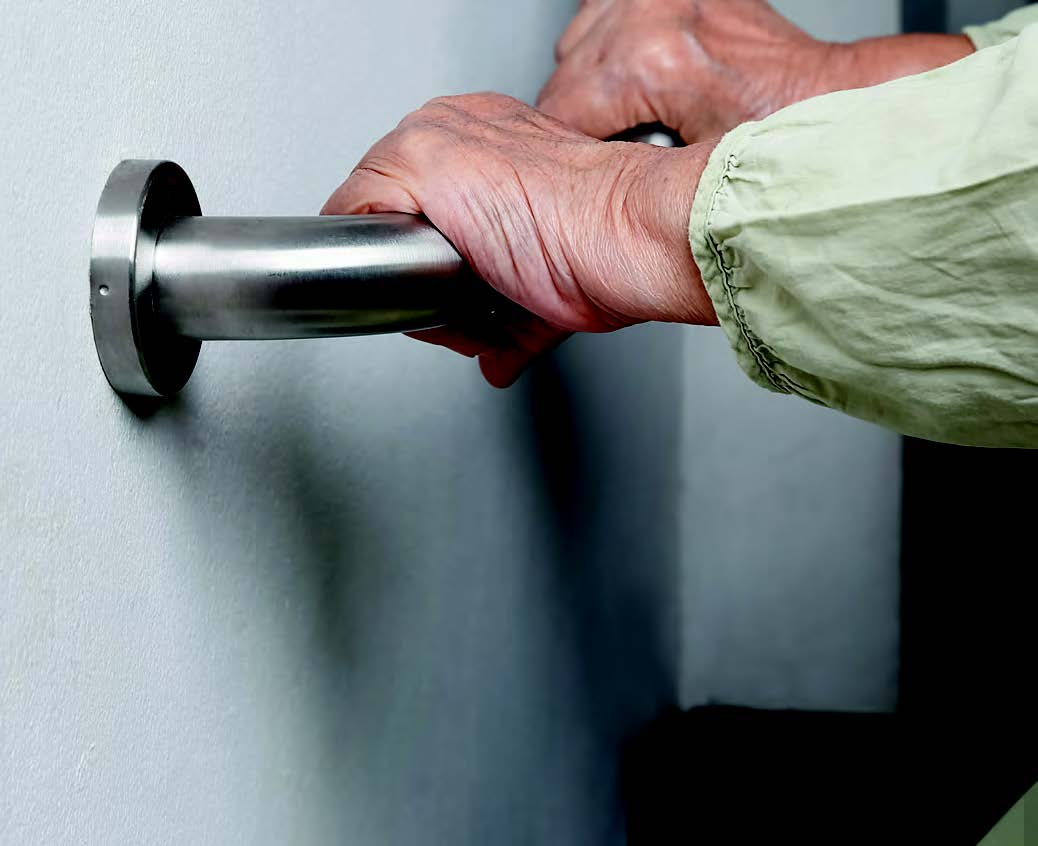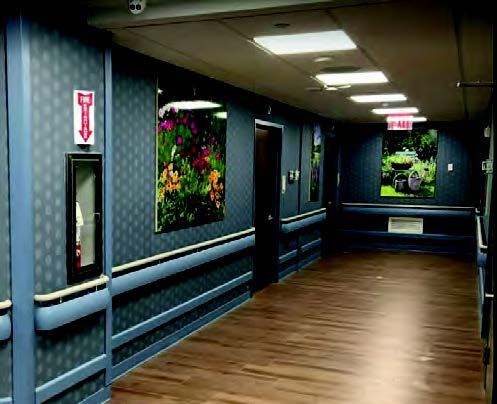
Handrails and grabrails are key to ensuring a safe environment for people with dementia
Architects and project managers are increasingly aware of how even the smallest details of the built environment significantly impacts the lives of people with dementia.
Specialist building products and fixtures and fittings enhance a space visually, helping sight impaired people to make out specific objects or areas. But they can also help them to stay safe while navigating their surroundings - which if in hospital or new to a care facility, can be terribly confusing.
The importance of grabrails and handrails
Grabrails are similar to handrails in terms of design, but are primarily used to prevent falls within the bathroom and to offer visibly-clear support to patients and residents in a potentially-slippy environment.
Both are often taken for granted items yet they can greatly improve a person with dementia’s experience of a building. They are of particular importance near external and internal stairs and in bathrooms or toilets, states The Dementia Services Development Centre at Stirling University.
Also in it’s design guidance it advises that:
Intastop Grabrails and handrails
Understanding the dementia brain
Phil Barsby, business development director at Intastop says,
“It is important to understand the effect that dementia has on a patient and their daily routine when designing a handrail or grabrail. Dementia affects the cognitive and memory function, which can make it difficult to distinguish colours and patterns.
Grabrails and handrail design
Intastop rails come in various shapes and designs, and colours and combinations to suit all requirements.
Combi-rail and dual-rails are particularly popular within health and care settings as they combine a robust impact protection function with that of handrail support. “Our range of handrails can be grasped and provide stability to prevent injuries or falls,” says Barsby.
Advice to specifiers
Barsby adds “Handrails and grabrails should give firm support, allow for an easy grip, and offer wayfinding and an understanding of which section of the building the person is in.
They should also:






Mental health environments
Mental health environments are also increasingly specifying the latest handrail and grabrail designs.
Barsby, said: “In mental health environments rails must be ligature resistance and are usually designed with a ‘homely’ aesthetic such as a wood-effect finish.